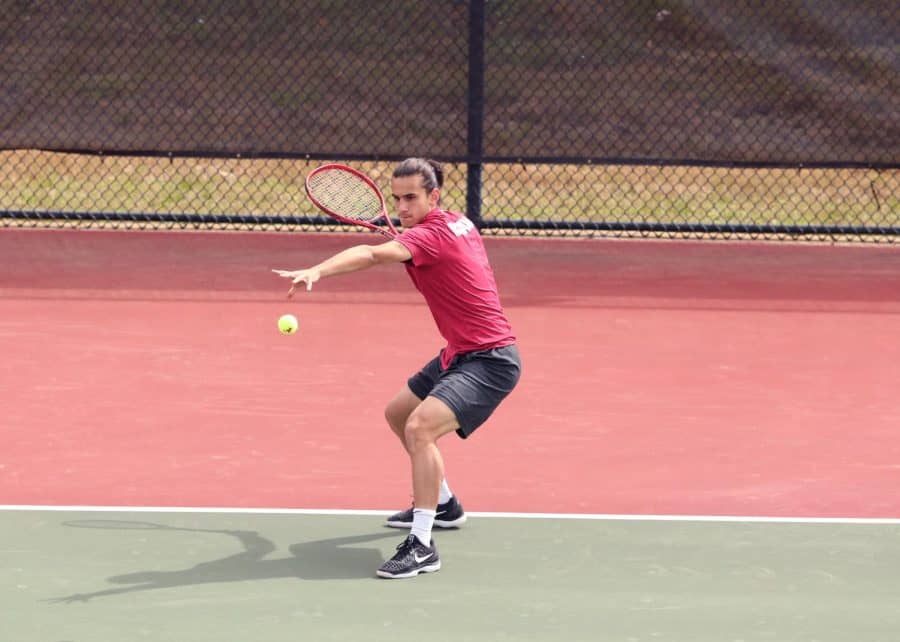After a year in waiting, Gschwendtner impacts the Tide
March 28, 2019
The road has not been easy for sophomore Jeremy Gschwendtner since he arrived at the University of Alabama.
After coming to campus last January, prior to the beginning of the dual match season last year, coach George Husack discovered that Gschwendtner was going to be declared ineligible by the NCAA to compete in collegiate matches due to his delayed high school graduation date.
“I had mixed emotions,” Gschwendtner said. “I was disappointed I couldn’t play straight away, but I was still really grateful that George [Husack] gave me the opportunity to come here and be part of a [Division 1] program.”
With an entire calendar year of being unable to represent Alabama, Husack knew it was going to be a tough time for Gschwendtner since he wasn’t able to get any college match experience.
As the season unfolded, Gschwendtner sat on the sidelines trying to learn the college game, and eventually watched his fellow teammates reach the Round of 16 in the NCAA championships for the first time in program history. Having watched his teammates’ success, his goal in practice every day was to improve enough to be able to contribute once he was eligible to play.
“I watched a lot of matches on the sideline last year,” Gschwendtner said. “It really fueled my hunger to prepare for this year. I came into this year prepared mentally and physically. I knew what to expect, which is different from most freshmen.”
But there was another bump in the road for Gschwendtner when the fall season began.
In the fall season for college tennis, players travel around the country to compete in collegiate tournaments that are not sponsored by the NCAA. These players are usually supported financially by the athletic department and can consult with coaches during their match.
But still being ineligible, Gschwendtner was unable to get financial or coaching support for the fall matches. Regardless, he still participated in the fall matches.
“He did it on his own,” Husack said. “He got into some matches, which was great for him because he needed the experience after not competing for such a long time.”
When the spring season began, Gschwendtner became eligible to play, but did not find himself in the lineup immediately and played sporadically in the first two weeks with a 3-0 record. After he suffered his first loss at San Diego State, Husack noticed a change in Gschwendtner’s game that became apparent in the Blue Gray National Tennis Classic two weeks later.
In the first match of Blue Gray against Fresno State, Gschwendtner avenged his loss by delivering a dominant 6-2, 7-6 (5), performance that clinched the win for the Crimson Tide.
“It gave us the trust that he was ready to go at that point given two months of competing in and out of the lineup,” Husack said.
Since that match, Gschwendtner has been dominating his opponents. He has started in seven of the past nine matches, and all seven of those starts resulted in wins. Not only has he won, but he has done so in controlling fashion with all 10 of his wins completed in two sets.
“He is extremely determined,” Husack said. “That could be because he had to sit out a year, but it is a testament [to who he is]. He didn’t come here for just an education. He came here to play. He has thrived in this environment and has spent more time than anyone else on this team outside of practice to improve his game.”
Husack now hopes Gschwendtner’s success on the court can lead to a larger role on the team once more newcomers arrive.
“He is leading by example,” Husack said. “The next stage for him is to be more vocal and share with others what he is doing because it adds to the team culture and philosophy that we preach.”








